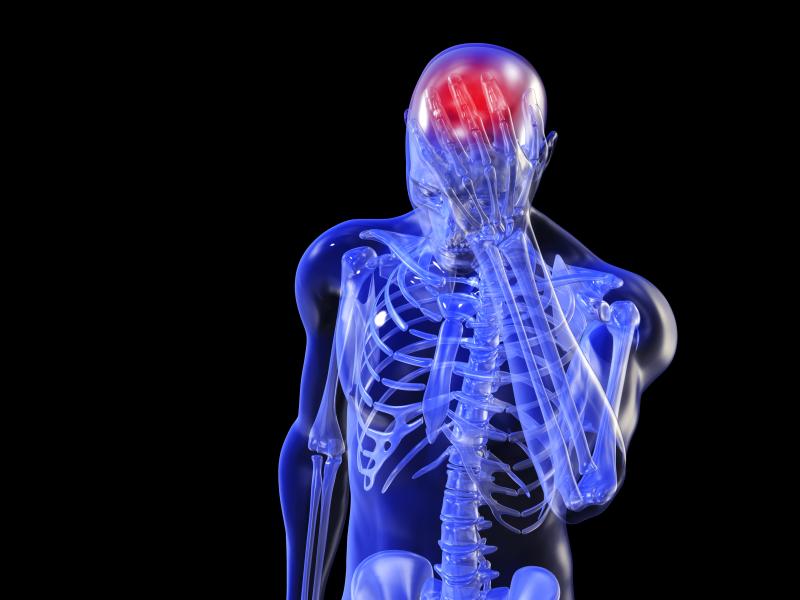
Asian ischaemic stroke patients with small and fragile cerebral vessels, as evidenced by the presence of multiple cerebral microbleeds (CMBs), may fare better with cilostazol than aspirin, as the former proves more effective at preventing cerebral haemorrhages especially when administered before white matter changes become extensive, according to the results of a subgroup analysis of the PICASSO* trial.
“Although white matter change is also a marker of small vessel disease, advanced white matter change differently affects the risks of cerebral haemorrhage and ischaemic events,” the investigators said. [Am J Neuroradiol 2006;27:830-835]
“Our subgroup analysis found that cilostazol reduced any stroke rate significantly in patients with mild-to-moderate, but not severe, white matter changes,” they explained, adding that such a difference may be attributed to the ceiling effect in patients exhibiting severe white matter changes.
PICASSO had been conducted at multiple institutions in three Asian countries (South Korea, Hong Kong and the Philippines), randomly assigning 1,534 patients (mean age, 66 years; 62.06 percent) to treatment with cilostazol (n=766) or aspirin (n=768) an average of 17 days after ischaemic stroke or transient ischaemic attack.
Of the patients, 89.1 percent had hypertension, 32.1 percent had diabetes mellitus and 57.6 percent were aged >65 years. Fazekas scores, which indicate white matter changes, were 1, 2 and 3 in 422 (27.5 percent), 643 (41.9 percent) and 266 (17.3 percent) patients, respectively. All patients were at high risk of haemorrhage, as specified by the following criteria: history of intracerebral haemorrhage (ICH; n=288), radiological findings of ICH (n=328) and multiple CMBs (n=918).
Initial results showed that over a median follow-up of 1.9 years, cilostazol was noninferior to aspirin in terms of preventing the composite of any stroke, myocardial infarction and vascular death (hazard ratio [HR], 0.80, 95 percent confidence interval [CI], 0.57–1.11; p-noninferiority=0.0077) but did little to cut the risk of cerebral haemorrhage (HR, 0.51, 97.5 percent CI, 0.20–1.27; p-superiority=0.18). [Lancet Neurol 2018;17:509-518]
In the current subgroup analysis, the investigators grouped the participants according to prognostic factors such as age, sex, presence of hypertension or diabetes mellitus, qualifying criteria for high risk of haemorrhage (history of ICH, radiological findings of ICH, or multiple CMBs), and the severity of white matter disease.
A significant interaction between treatment group and index of high risk for cerebral haemorrhage on haemorrhagic stroke (p-interaction=0.03) became apparent. Specifically, this outcome occurred with less frequency in the cilostazol than in the aspirin group among patients with multiple CMBs (1 vs 13 events; HR, 0.08, 95 percent CI, 0.01–0.61; p=0.01). [Stroke 2019;doi:10.1161/STROKEAHA.119.023855]
There also was a marginal interaction between treatment group and white matter change on any stroke (p-interaction=0.08). Cilostazol was associated with a significant reduction in the incidence of any stroke, particularly in patients with white matter changes that were mild (5 vs 16 events; HR, 0.36, 95 percent CI, 0.13–0.97; p=0.04) or moderate (16 vs 32 events; HR, 0.50, 95 percent CI, 0.29–0.92; p=0.03).
At follow-up, heart rate and high-density lipoprotein (HDL) cholesterol level were notably higher in the cilostazol group than in the aspirin group at follow-up.
“Cilostazol failed to show superiority to aspirin in reducing the composite rate of vascular events, as [the drug] was associated with an increased rate of myocardial infarctions. After 13 months, heart rate had increased from baseline in the cilostazol group but decreased in the aspirin group,” the investigators pointed out.
“Increased heart rate may have increased the burden on the heart, resulting in a higher rate of myocardial infarction in the cilostazol than in the aspirin group. Heart rates should, therefore, be monitored in ischaemic stroke patients treated with cilostazol for secondary stroke prevention,” they continued.
*Prevention of Cardiovascular Events in Asian Ischemic Stroke Patients With High Risk of Cerebral Hemorrhage